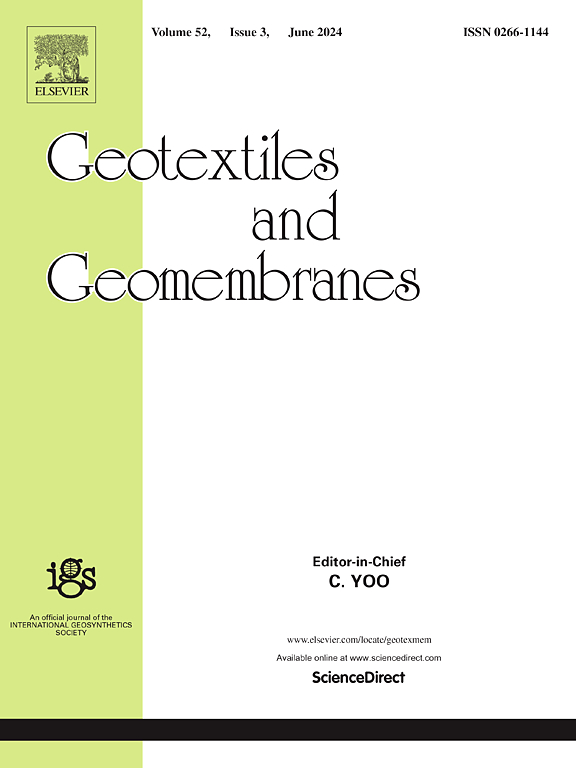Comparative numerical analysis of anti-liquefaction in sandy soil reinforced with OSC and GESC under sinusoidal loading
IF 6.2
1区 工程技术
Q1 ENGINEERING, GEOLOGICAL
引用次数: 0
Abstract
Three-dimensional numerical models are developed to investigate the anti-liquefaction of ordinary (OSCs) and geosynthetic-encased (GESCs) stone columns in sandy soil under sinusoidal loading using the fluid-solid coupling method. The validated models capture and compare the vertical and radial deformation, excess pore water pressure (EPWP), and vertical effective stress of OSC, GESC, and sandy soil. Furthermore, ten essential factors are selected to conduct the parametric study. Numerical results reveal that GESC is more suitable for improving sandy soil and resisting dynamic load considering the deformation and EPWP. The bulging deformation is no longer the primary reason for failure. The partial encasement (e.g., 1-2D, D = column diameter) and short floating and end-bearing GESCs (e.g., 1-2.5D) are not recommended for reinforcing the sandy soil. GESC is more sensitive to low-frequency and high-amplitude loads, with shear and bending, whereas displays a block movement under higher frequency and lower amplitude loading. The change in loading amplitude is more disadvantageous to GESC than loading frequency. GESC with a large diameter cannot effectively resist the dynamic loads.
正弦荷载作用下盐砂和GESC加筋沙土抗液化的数值对比分析
采用流固耦合方法,建立了砂质土中普通石柱和包覆土工合成石柱在正弦荷载作用下的抗液化三维数值模型。验证模型捕获并比较了盐砂、GESC和沙土的垂直和径向变形、超孔隙水压力(EPWP)和垂直有效应力。进而选取10个要素进行参数化研究。数值结果表明,考虑变形和EPWP, GESC更适合改良砂土和抵抗动荷载。胀形变形不再是破坏的主要原因。不建议采用局部围封(例如,1-2D, D =柱径)和短浮动和端承GESCs(例如,1-2.5D)来加固沙土。GESC对剪切和弯曲等低频和高幅值荷载更为敏感,而在高频和低幅值荷载下则表现为块体运动。加载幅值的变化比加载频率的变化更不利于GESC。较大直径的GESC不能有效抵抗动载荷。
本文章由计算机程序翻译,如有差异,请以英文原文为准。
求助全文
约1分钟内获得全文
求助全文
来源期刊

Geotextiles and Geomembranes
地学-地球科学综合
CiteScore
9.50
自引率
21.20%
发文量
111
审稿时长
59 days
期刊介绍:
The range of products and their applications has expanded rapidly over the last decade with geotextiles and geomembranes being specified world wide. This rapid growth is paralleled by a virtual explosion of technology. Current reference books and even manufacturers' sponsored publications tend to date very quickly and the need for a vehicle to bring together and discuss the growing body of technology now available has become evident.
Geotextiles and Geomembranes fills this need and provides a forum for the dissemination of information amongst research workers, designers, users and manufacturers. By providing a growing fund of information the journal increases general awareness, prompts further research and assists in the establishment of international codes and regulations.
 求助内容:
求助内容: 应助结果提醒方式:
应助结果提醒方式:


